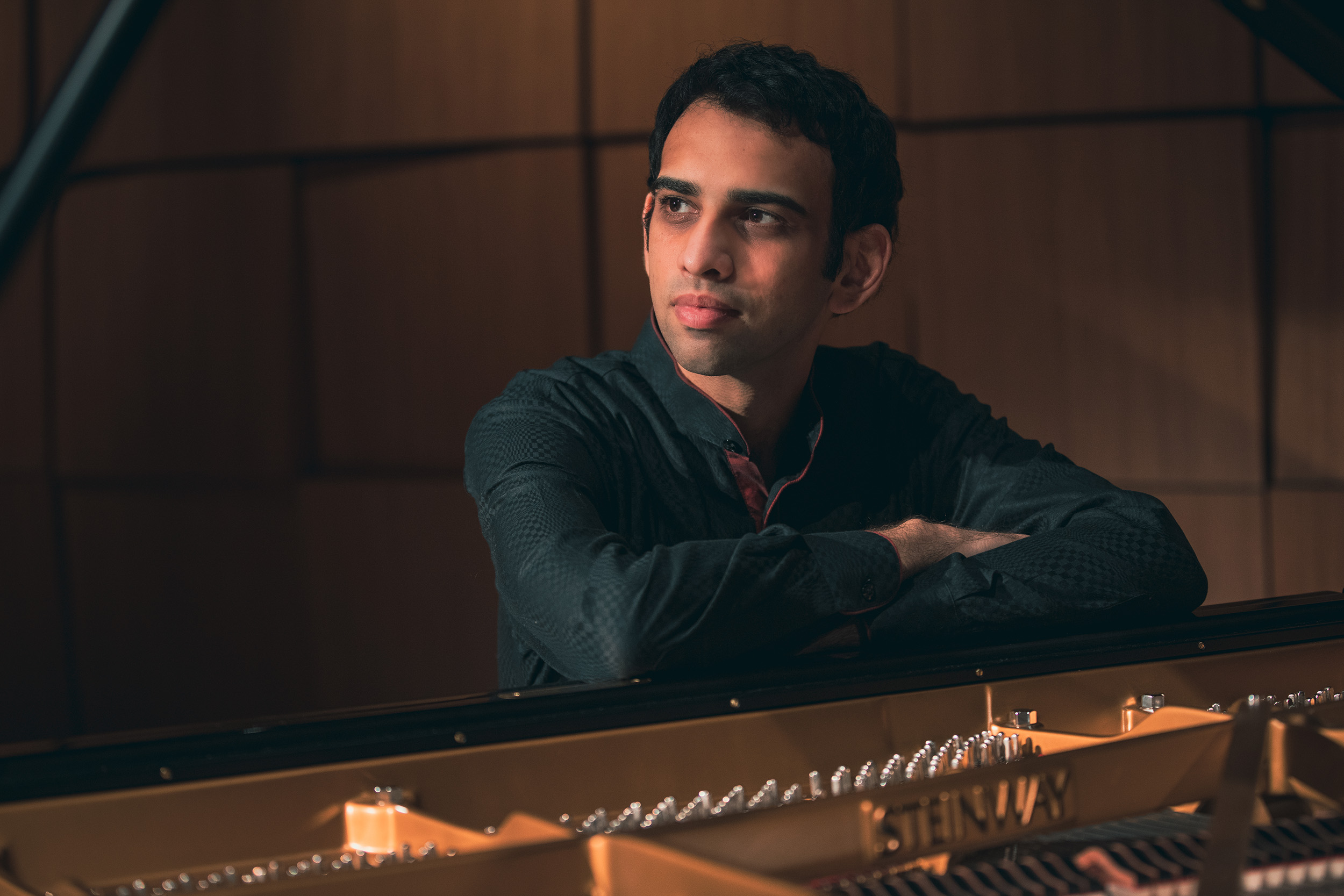Utsav Lal
 A Concert of Indian Classical Music with New Interpretations
Tuesday, July 22 | 6:00 PM
A Concert of Indian Classical Music with New Interpretations
Tuesday, July 22 | 6:00 PM
A full night of Indian culture starts with an educational program at 6 PM, followed by a catered meal at 6:30 PM. Then, at 7:30 PM Utsav Lal takes the stage with a concert that combines jazz with traditional classical Indian music featuring tabla player Nitin Mitta.
Buy Tickets
Dating back centuries, with elaborate rules & systems to govern pitch, rhythm and structure, Indian Classical Music is one of the most ancient classical traditions on earth and at the very heart and soul of Indian music is the raga. Translating loosely to “That which colors the mind”, each raga is a sound world developed using structured improvisation that patiently builds a rich universe from slow and meditative to pulsing and ecstatic. With a unique intricacy and rhythmic sophistication, a recital is a solo-oriented form where the ragas are performed to the accompaniment of Indian percussion instrument, the Tabla, which plays an identified rhythmic cycle or Tala ranging from a 3 beat to 108 beats within a cycle. The concert has in store a fascinating repertoire of Classical Indian Ragas presented in their traditional form and splendor as well as original compositions and arrangements blazing new pathways of conversation between raga music, jazz and creative improvisation. As is traditional, the ragas presented are chosen at the venue directly before the performance. Musicians believe the instrument, the space and the atmosphere suggest to the performer what raga is willing to be evoked. Part 1: ALAP- JOD- JHALA (Solo Piano) In the first section, the pianist will present an evening raga in the traditional solo exploratory style of Alap-Jod-Jhala which will allow the audience to soak in its full flavor. Not instant music, the music grows gradually. Often likened to the process of painting, the raga is exposed note by note like brush strokes, to unfold the full power of the raga. The Alap which is like the first movement, a rubato exploration of the raga, showcasing the relationship between each pitch with simplicity & depth to evoke the mood and emotion of the raga. The Alap moves into the Jod where an element of rhythm will be brought in & the recital gradually climaxes with a step-by-step acceleration of the rhythm in a fast pattern of spontaneous improvisations within the permissible raga notes. This is called the Jhala, the final movement & climax of this section. The music is captivating with great range and variety in tempo and emotion. Part 2: GAT (Piano with Tabla) In this section, the pianist will present a few compositions showcasing a beautiful evening raga to the accompaniment of Indian percussion instrument, the Tabla. This section called the Gat or the fixed composition of the raga is when the percussion makes a dramatic entry with a short solo rhythmic piece. The musicians will begin in Madhya laya or medium paced tempo in a chosen rhythmic time cycle and move onto a Dhrut laya, fast paced tempo. Many improvisations will be included by the pianist to give original expressions to his rendition of the raga and he will improvise and deliver a variety of Taans (musical phrases in different speeds) within the defined framework of the raga, returning to his fixed composition from time to time. Jugalbandi (spontaneous musical conversation) between the piano & the tabla will link the different compositions in the raga and allow the artists to enter into a dialogue and communicate in the language of unwritten music. The piece will allow some seamless opportunities for either musician to take front stage and present short solo sections. This section will finish with an exciting finale of piano and tabla in a fast-paced tempo which always concludes with a rhythmic delight-the Tihai, a dramatic and repetitive three structured phrase ending in Sam, the final beat of the tala. Part 3: Semi- Classical Compositions A selection of semi-classical compositions that are popular and well known throughout the subcontinent will be presented by the pianist with a strong blend of improvisation & originality allowing other influences to engage with the tradition. Notes on the Program
Learn about Utsav Lal
Indian pianist and composer Utsav Lal, known as “The Raga Pianist,” is celebrated for his pioneering work in adapting Indian classical music to the piano. Described by The Irish Times as “a fleet-fingered performer whose best moments can be both highly evocative and dazzling,” Lal has developed a unique approach to presenting ragas on an instrument traditionally outside the genre.
With a career spanning two decades, Lal has performed at prestigious venues such as Carnegie Hall (New York), the Southbank Centre (London), the Kennedy Center (Washington DC), Steinway Hall (New York), Asia Society (Hong Kong), and the Arts Center (Melbourne). A disciple of Dhrupad master Ustad Wasifuddin Dagar, his music integrates elements from jazz, avante garde improvisation, classical and Irish music, culminating in a truly original and unique voice on the piano.
Recognized as a Young Steinway Artist, Lal has earned acclaim for his improvisational creativity, technical precision and innovative contributions to the global music landscape. His performances offer a transformative journey through the timeless world of ragas, transcending conventions and captivating audiences worldwide.

